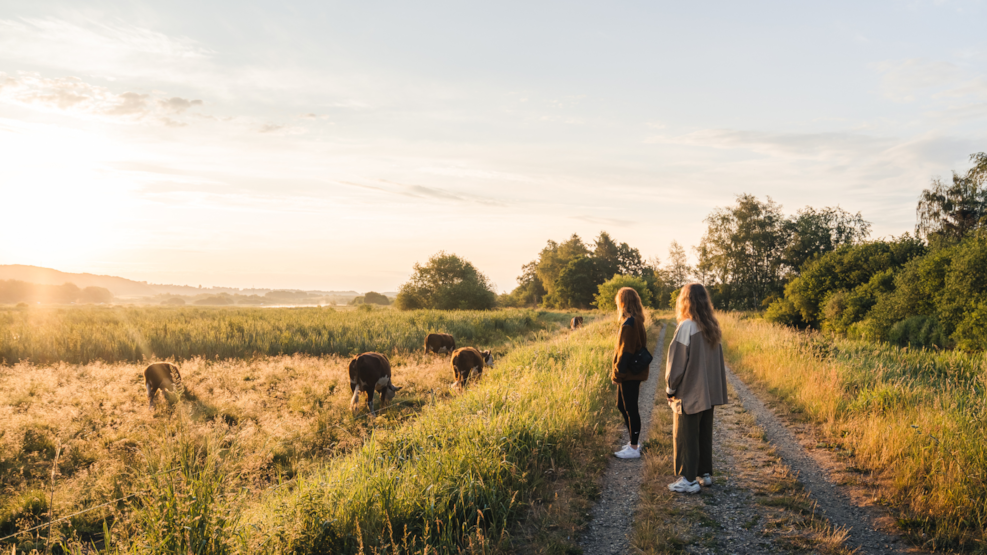
Vejle Ådal
Vejle Ådal, which is the largest of the area's tunnel valleys, offers fantastic nature experiences and cultural-historical highlights.
The largest town in Vejle Ådal is Egtved with approx. 2,400 inhabitants. Egtved is located 19 km southwest of Vejle and here the town slopes down towards Vejle Ådal, an adventurous nature area that especially contains the story of the Egtved girl - the city's trademark.
Egtved lies in an area of outstanding natural beauty, in the rolling downs of Vejle Ådal. Located in the deepest of the valleys of the area, Egtved offers pristine natural settings as well as cultural experiences.
Among the mosaic of cultural institutions in Egtved are: the old grocer shop museum Bindeballe Købmandsgård; the Randbøldal Museum with outdoor water exploratorium ; the windmills and watermills of Frederikshåb Mill Park; the Bronze Age barrow of the Egtved Girl; the Viking Age vestiges of the Ravning Bridge; and Robert Jacobsen and Jean Clareboudt’s awe-inspiring sculpture park in Tørskind Grusgrav.
Areas of natural beauty include the hills of Vork, the moorlands of Randbøl and the woodlands of Frederikshåb. The hilltop vantage point of Runkenbjerg offers amazing vistas of the valley.
Vejle Ådal features many hiking and bicycling routes. The most famous is the Bindeballestien, which follows the now disused Vandelbane railway line from Vejle through Vejle Ådal to Bindeballe and the Ancient Road.
Also worth a visit is the old Baroque church in Nørup and the area around Engelsholm Castle and the nearby lake.
Vejle Ådal also offers several good restaurants and good accommodations.
Egtved grew to prominence following the establishment of the Kolding-Egtved railway in 1898. The town had a railway link until 1930. The Egtved Museum relates the story of the town’s development from that of a small hamlet to a medium-sized town. Today the town offers good shopping opportunities.